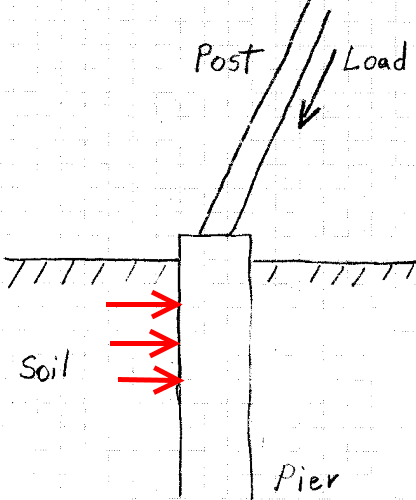"Don't we need to calculate the max stress and compare it with 400kPa like we do for shallow pad footing?"
No. This would be considered a deep foundation. The moment is resisted internally and by lateral soil resistance. Only the axial load is seen by the end of the shaft against the soil below. If your axial bearing load does not exceed 28kN, then you should be good for bearing with the 300mm shaft. You'll need enough skin friction to resist the uplift in excess of the weight of the concrete pile, which, if I've converted units properly, shouldn't be difficult for the 300mm shaft (the 600mm shaft weighs more than the uplift value, if I've done my math and metric conversions correctly), since the required skin friction value is about 1/10 of the lowest value I've seen from our geologists.
That just leaves the matter of the lateral bending resistance of the soil and the structural resistance of the shaft, which based on some assumptions I made of the soil properties and shear at the top of the pile, should work out with a lightly reinforced 300mm shaft. We use Allpile and LPile, both of which utilize P-y curves to analyze this type of foundation. Hopefully, you have access to something similar (several programs of this type have trial versions online). There are also hand methods, such as Broms.
If you decide to stick with the 600mm shaft, it would seem to be more than adequate for stability. I would still recommend against leaving it as an unreinforced shaft, regardless of whether the theoretical concrete tension strength is adequate. Concrete strength in tension is very unreliable.


![[idea] [idea] [idea]](/data/assets/smilies/idea.gif)
![[r2d2] [r2d2] [r2d2]](/data/assets/smilies/r2d2.gif)
